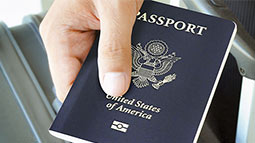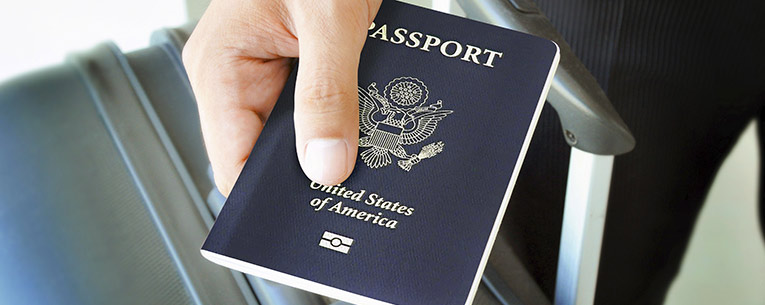Discovering your passport is missing while you're traveling can be one of the most gut-wrenching moments you'll have on the road. One minute, you're enjoying your time abroad. The next, you're rummaging through your bag and racking your brain, praying you've just forgotten where you put it. Before you panic, try to remember that you aren't the first person to lose a passport while you're traveling, and you certainly won't be the last.
As a U.S. citizen, replacing your passport should be a relatively similar process globally. Follow these guidelines to replace your passport in most countries.
Report the Incident
Hopefully, any incident involving a lost or stolen passport doesn't involve a serious or harmful crime beyond theft. But no matter the severity of the crime, or even if you just misplaced your passport, it's important to report the loss so that your passport can be suspended. If at all possible, contact the local authorities to obtain a police report documenting the lost or stolen passport.
While a police report is not required to replace your passport, it can help to confirm the circumstances surrounding the missing document and expedite the replacement process. You can also use this report when making a claim through your international travel insurance policy if the incident caused you to miss your return flight or another leg of your trip.
Contact the Nearest U.S. Embassy or Consulate
To obtain a replacement passport, which you must have before you can return to the U.S., visit an official U.S. government office in the country you're visiting. To find the nearest office, visit the U.S. Department of State website, which has a complete listing of each embassy and consular office around the world. You or one of your contacts in the U.S. can also call the Office of Overseas Citizens Services (the website lists both a domestic and international number).
Once you've located the nearest office, you'll need to make an appointment to visit the office in person. Employees at this office will be able to help you obtain the appropriate documentation and begin the process of applying for a replacement passport.
What You'll Need When You Go
When you arrive at the local embassy or consular office (usually open during normal business hours), you will likely receive detailed directions as to the forms you need to fill out. These forms include the DS-64 to report a lost or stolen passport (this is where a police report may come in handy to confirm the incident) and the DS-11 to apply for a replacement. These forms are available at the office and can be completed on site, but you can also access a copy on the U.S. Department of State website.
You will also need identification forms and details about your travel plans to obtain a replacement passport. The more information you can provide, the faster the process can begin. Plan to bring a photo ID and proof of U.S. Citizenship (a copy of the missing passport if you have one or a birth certificate) to your appointment.
If your travel plans require an urgent replacement, be sure to bring documentation of your scheduled flights or train tickets. You may be able to obtain an expedited limited-validity passport (you will need to replace this temporary passport once you return to the U.S.) if you have immediate plans to leave the country where your passport was lost or stolen.
A full-validity passport may take a bit more time to receive, but these passports are valid for a full ten years, so this option should be used in any case that is not an emergency. In either case, you'll need a passport-size photo. If you can't obtain this on-site, you'll be directed to place nearby where you can obtain an appropriate photo.
Preparing for These Situations in Advance
Remember, no trip ever goes completely as planned. There are always bumps in the road. Some, like losing your passport, are bigger than others. Being prepared for these incidents can help you to recover quickly and get back to the fun part of traveling.
To avoid theft, it's best to leave your passport in a safe place while you're out and about (e.g., in a safe at the hotel where you're staying). Of course, you will have to have your passport on your person in transit. In these situations, always keep your passport in the same safe place--a zipped interior pocket in your purse or personal item--so you can always double check that it's there as you move from one place to the next.
In case an emergency does arise, always travel with a copy of your passport (tuck a paper copy into your luggage or save a copy to Google docs or Dropbox so you can access it from any device) and leave a copy with a contact at home (friend, family or even your travel agent). The copy can't serve in any official capacity, but it will help when it comes to replacing your passport, as the DS-64 form requires you to provide your passport number.
If you have specific questions about filing a report for a missing passport and obtaining a replacement, visit the U.S. Department of State website for answers to frequently asked questions on the topic.
Choosing the right Allianz Travel Insurance plan is a great first step to protecting yourself while you travel. Your Allianz Travel Policy includes access to help from travel professionals on the Allianz Assistance team who can facilitate communication with the proper channels and help you to replace your passport as quickly as possible.
Related Articles








Share this Page